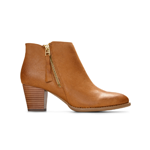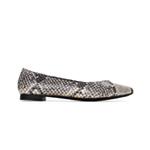Soul to Sole: What Makes A Healthy Plate
written by Ciara Lucas, TV Journalist, certified fitness trainer and nutrition coach, Vionic Innovation Lab guest contributor
What Makes A Healthy Plate: Nutritional Building Blocks That Create A Holistically Healthy Diet
A healthy lifestyle isn’t complete without a balanced diet. Ever hear the phrase, “You can’t out train a bad diet?” Exercise and food are a feedback loop. Both are stand alone categories, but they work best together to achieve high performance, energy, and function.
Food choices can be incredibly personal. There is no one-size-fits-all diet because it depends on many factors including age, dietary needs/preferences, goals, budget, and personal beliefs.
The science of nutrition can seem overwhelming but eating healthy doesn’t have to be hard. Building a healthy plate for each meal means including food that’s satiating, nutrient-dense, and most importantly, delicious!
Breaking Down The Basics
A simplified way of breaking down nutrition is micronutrients and macronutrients. Micronutrients are smaller categories of nutrition—think vitamins, minerals, and all the tiny nutrients located inside the genetic makeup of food. Whole, natural food like fruits and vegetables tend to be more nutrient-rich than processed foods like chips, crackers, or candy. Macronutrients are the bigger picture (“macro view”) of food comprised of carbohydrates, protein, and fat. When building a healthy plate, consider choosing food within each macronutrient category that makes sense for you.
The Truth About Carbs
Carbohydrates seemingly get a bad reputation. The average person looking to make dietary changes on a whim usually assumes it’s time to cut out all carbs for the sake of weight loss. Good news: that’s not true. The truth is, carbohydrates are an essential part of daily intake. They give your body energy and provide fuel your body uses to build and repair itself. But it does matter what kind of carbs you’re choosing to consume. Not all carbs are made equal. Some are more nutrient-dense than others. Simple carbs include things like cookies, cake, white bread, muffins/pastries. These are all loaded with carbohydrates and sugar that won’t keep you full for very long or provide much nutrients. What you should aim to have more of are complex carbs. These take longer for your body to break down, and in turn provide more fuel.
Complex Carb Options:
- Potatoes
- Whole grains
- Fruit
- Whole wheat pasta/breads
- Beans and lentils
The “Skinny” On Fats
Fat is another micronutrient that has a lot of misconceptions attached to it. Ever since the popular “fat free” craze that started in the 60’s, there’s still a notion that it should be avoided. Dietary fats are essential to give your body energy and to support cell growth. But similar to carbs, the type of fat does matter when it comes to your health. The worst type of dietary fat is the kind known as trans fat. It’s highly processed, promotes inflammation, and is linked to heart disease, stroke, diabetes, and other chronic conditions. The “good fat” are monounsaturated and polyunsaturated fats. Good fats come mainly from vegetables, nuts, seeds, and fish.
Healthy Fats:
- Extra virgin olive oil
- Avocado
- Egg yolks
- Nuts/Seeds
- Coconut oil
The Power Of Protein
Protein is arguably the most important macronutrient of the three, if I had to pick! But again—all three categories are necessary for daily intake. Protein is the building block of your muscles. Eating adequate amounts of protein helps you maintain your muscle mass and promotes muscle growth when you do strength training. The higher quality the protein is, the better. So, think less processed–more whole, lean cuts of meat or even plant-based options.
Powerful Protein Sources:
- Eggs/egg whites
- Fish/shellfish
- Chicken
- Turkey
- Lean beef
- Pork
- Greek yogurt
- Lentils/beans
Making The Right Choices
I can’t tell you what is the right choice for you. You know your body, your goals, and your taste buds! But I can tell you that your food choices will determine how you feel, move, and look. My suggestion for anyone just getting started on a goal to eat healthier is to take inventory of your kitchen and your daily intake. The more whole foods you’re consuming, the healthier your diet is likely to be. Be mindful about everything you’re consuming each day. Take note about how certain foods make you feel, and how long you feel satisfied. Our relationship with food needs to be cultivated and maintained just like any other in order to ultimately achieve longevity.
FOLLOW CIARA ON INSTAGRAM
LEARN MORE ABOUT CIARA
SHOP ACTIVE SNEAKERS
VIONIC SOUL TO SOLE PROGRAM










